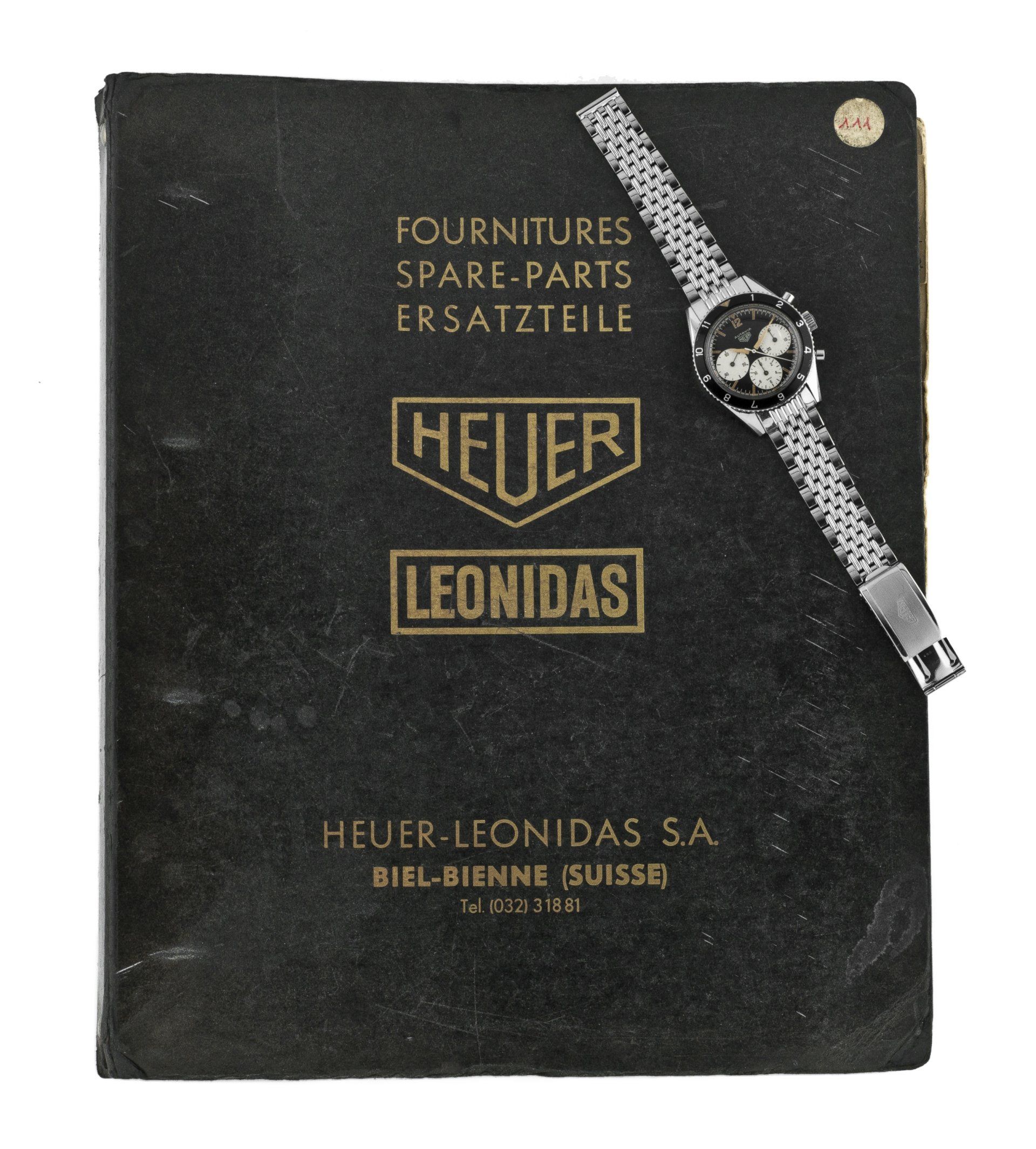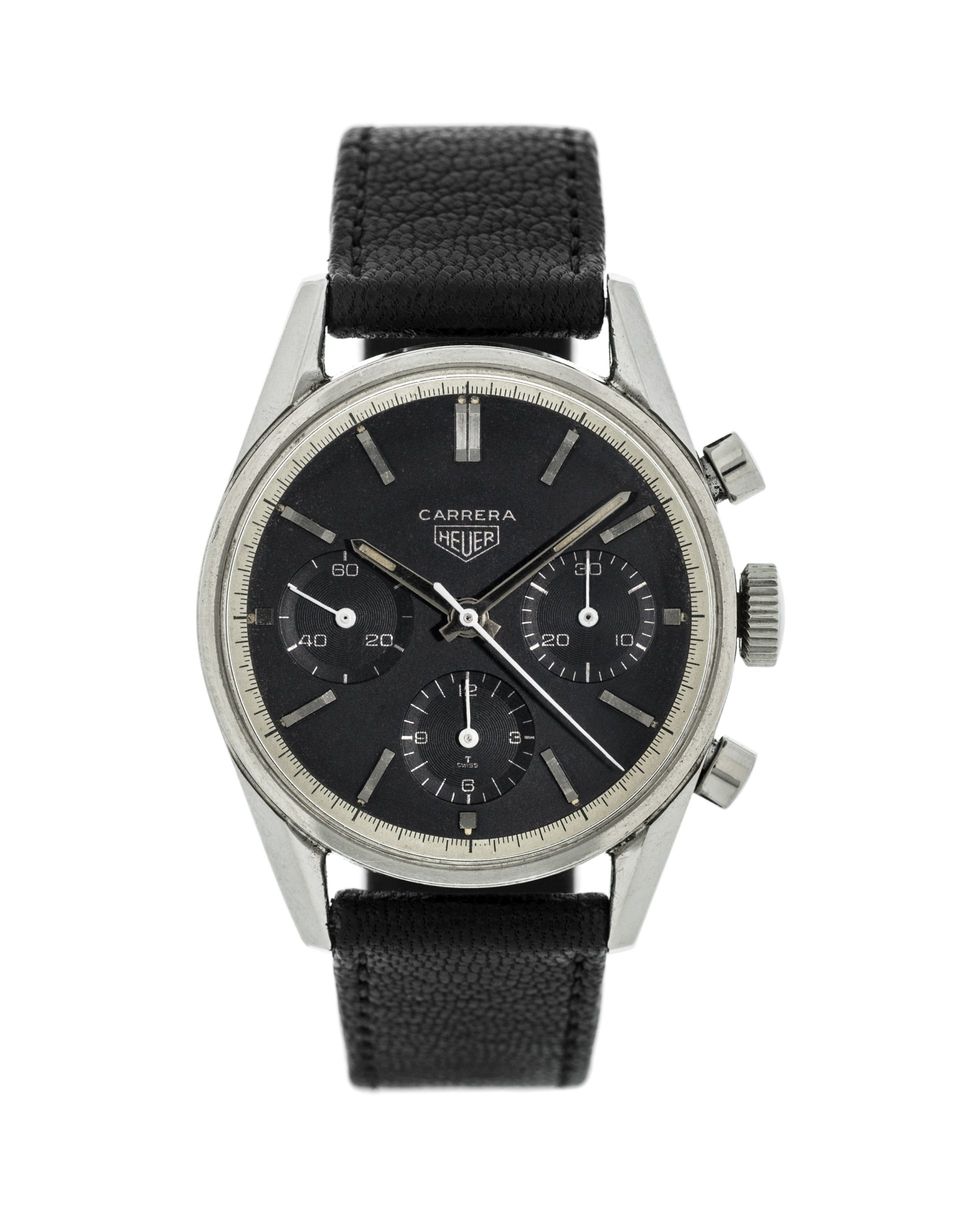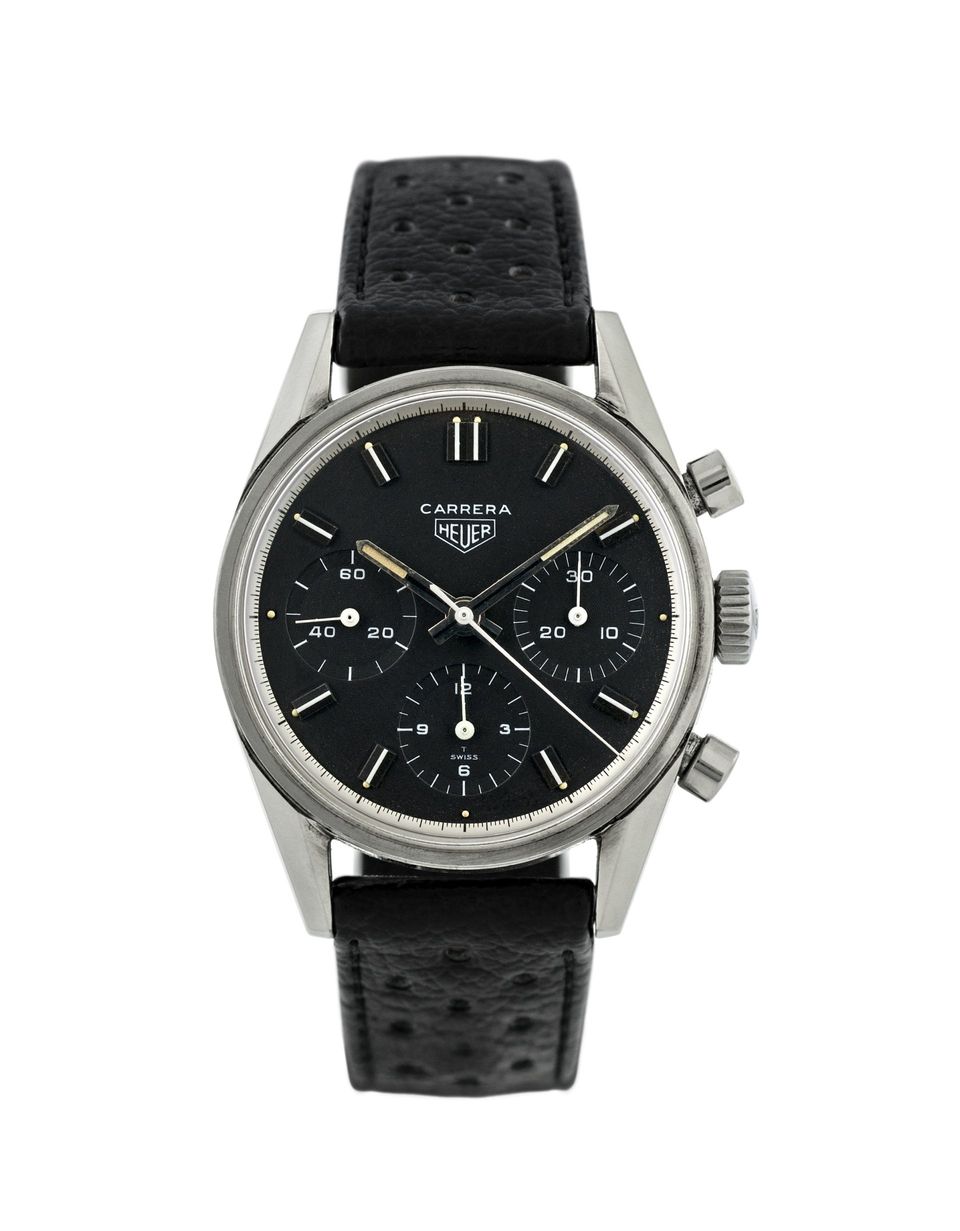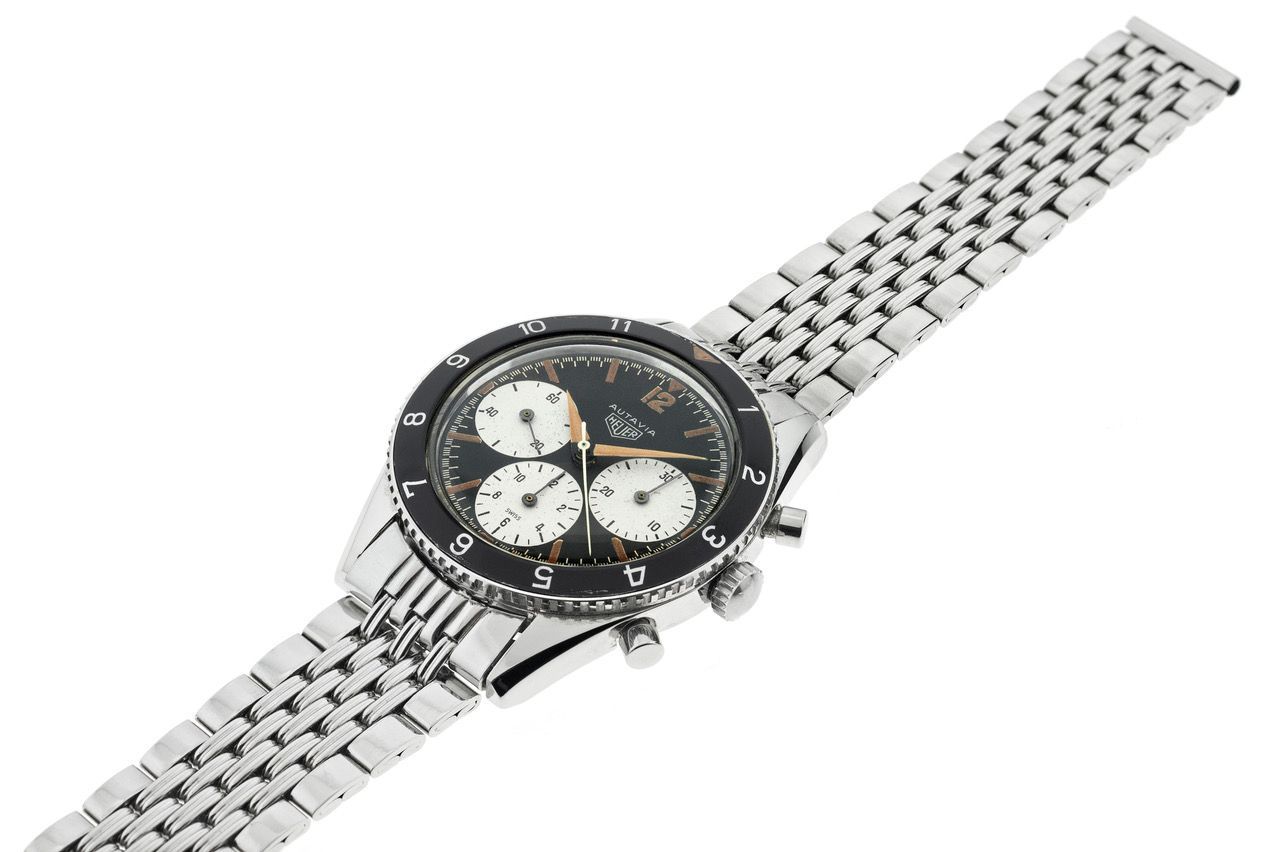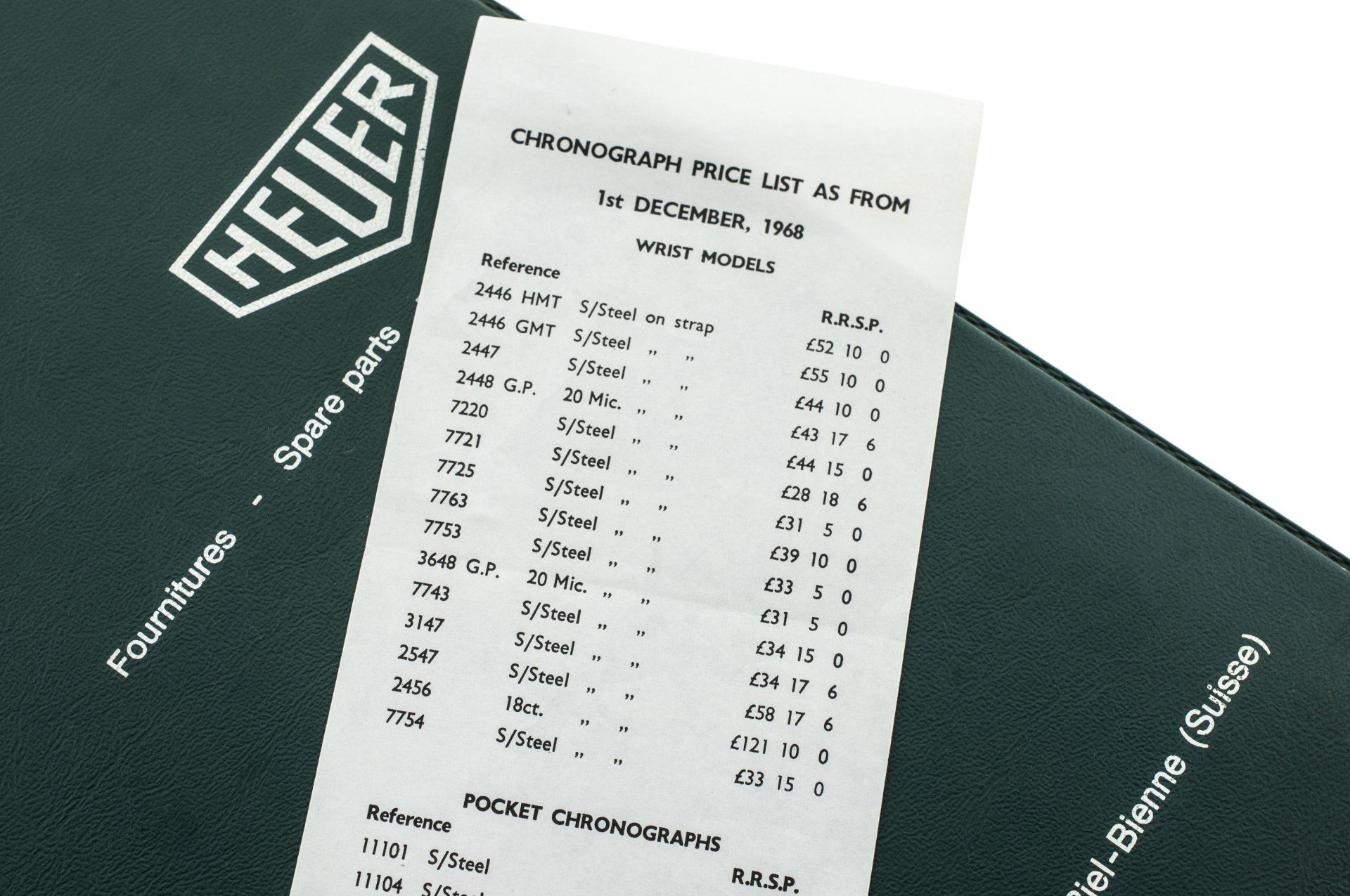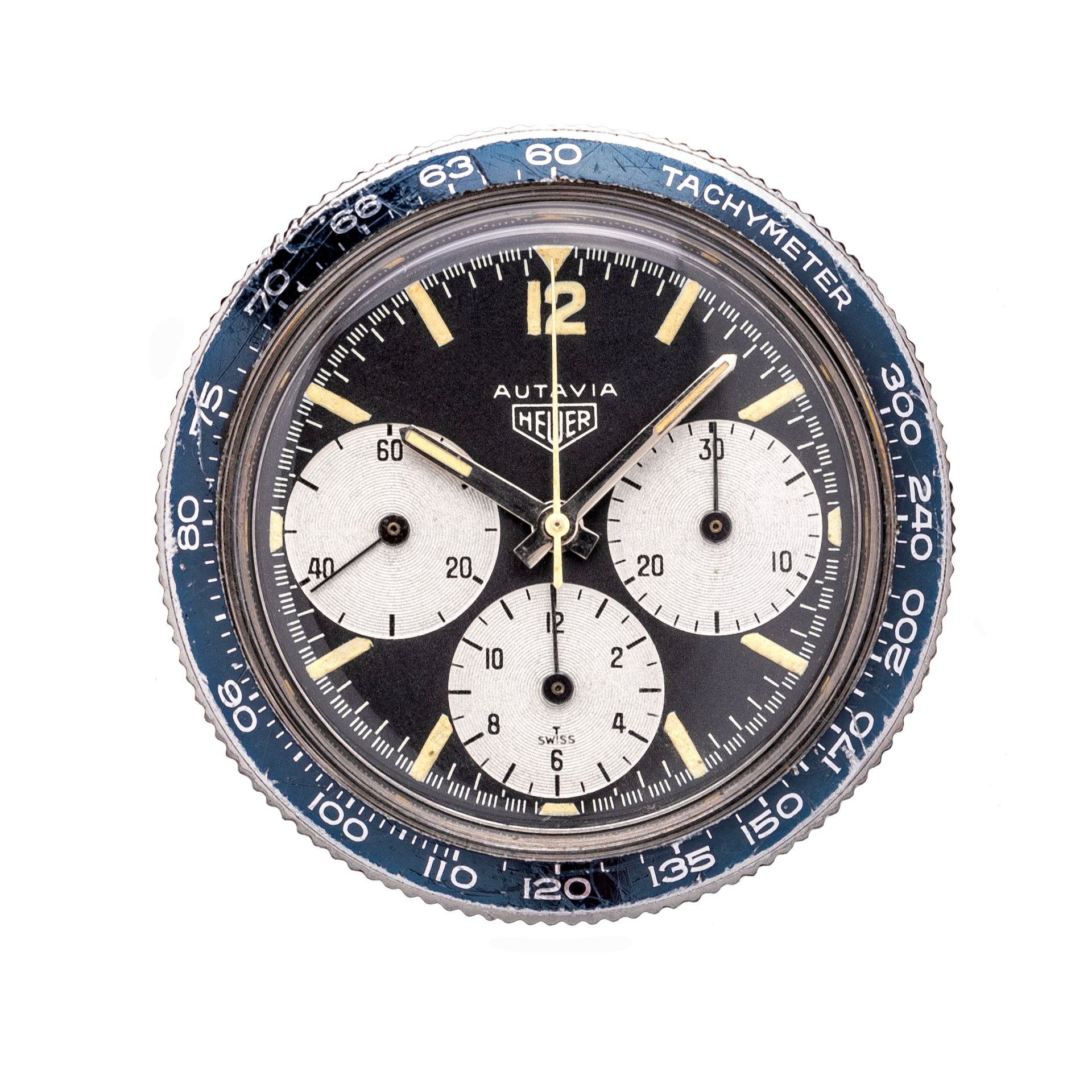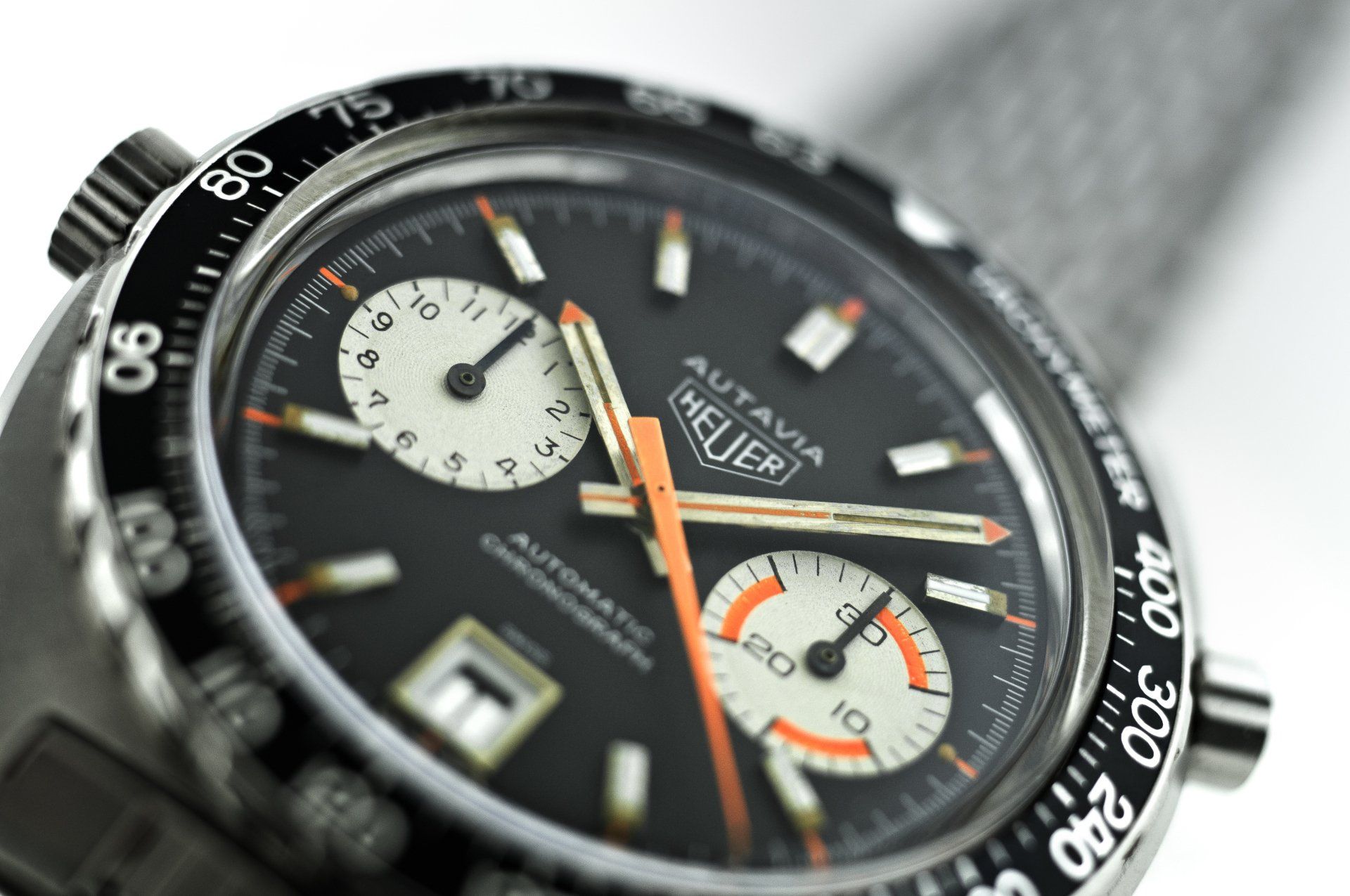The Carrera 2447N - Not a standard Carrera
It is not always appreciated by collectors that in Heuer Carrera terminology whilst the N stands for noire, the S stands for standard and not silver, even if it refers to silver or white paint by default.
The fact that the "all silver" Carrera dials are "standard" and black is not can also be borne out by going on to Chrono24 or looking around the vintage Carrera examples for sale in the market. What you will see is that the vast majority of 2447 for sale, or 3647 for that matter, are the silver dials and the black dials are very thin on the gorund.
Introduced in 1963, the 2447N ran until the end of the Carrera line in 1969/70 and basically only had two executions. Unlike the silver dials that had three "scale" dials - namely tachymeter, decimal and pulsation - the black dials came with only one "scale" - the tachymeter - which is a very scarce dial to find. As an example of the rarity of the noire, my database shows that during the entirety of the 1st execution run the "all black" 2447 N and NT are over 50% rarer than the silver dials.
You will notice from the pictures below that one of the strengths of early 1960s dial design was minimalism. As the years wore on, manufacturers wanted you to know what type of movement was inside or its accuracy, and so words like "El Primero', "Automatic Chronograph", "Chronometer", Professional" etc etc appeared on chronograph dials, in some ways cluttering up the purity and distracting from the design. As someone who appreciates the less is more mantra this lack of complication appeals to me, as all I need to know is that it's a Heuer and a Carrera!
Walking through the chronology of the Carrera 2447N, the 1st execution was launched in 1963. The initial dials were the 2447N and the 2447S "eggshell", the latter being extremely rare as it ran only a short time before the dial became metallic silver. The 1st executions ran until 1968, when the 2nd execution came in, but essentially there were only two dial batches: one with silver dial printing and one with white (with the very latest data showing neither being noticeably rarer than the other). The 1st executions can always be told apart by the hour markers and hands - both were plain steel - whereas the 2nd executions had shorter and wider painted hour markers and black stripe hands. There is also a clear cut off with serial numbers, with the 1st executions running until 93xxx where they cross over with the beginning of the 2nd execution, which start to appear in the 91xxx range. You would always expect the earliest Carrera (just like the early Autavia) to have unsigned crowns, however you start to see Heuer signed crowns arrive midway through the run.
The very earliest Carrera would also see the movement bridge and back case signed Ed Heuer & Co but during the 2447 poly-back case run (56xxx - 57xxx) and to coincide with the merger in 1964 you start to see the first Heuer Leonidas signed bridges. Thereafter both the bridge and case back would be Heuer Leonidas signed. As with all the Heuers using the Valjoux movements the base plate would only feature the movement number (say 72) and the letter (R) which is the code for Valjoux designated via the La Federation Horlogere Suisse. On earlier V72s from this period there would be no other text but on later examples you would find the two letter brand identifiers. For example on Heuer this code was MN, on Universal it was TJ and on Enicar AR. One other way of identifying a movement which is not what it seems is that they would not repeat words. If the bridge is Swiss signed then the left hand side of the movement would not be, if the bridge isn't Swiss signed then the left hand side would be, and the same for the phrase "17 Jewels Unadjusted".
Values-wise the 1st execution 2447N are currently worth between £5500 and £12500 (head only) condition dependent with the 2nd execution worth between 10-20% less. Apart from the above, additional things to look out for are "service" hour and minute hands on 2nd executions, where the black stripe runs to the tip and has a longer lume section and service chronograph sweep hands, which are fatter at the dial centre, as finding originals are like trying to hunt for needles in haystacks.
To read more about the vintage Heuer Carrera, click on the button below to check out the Heuer Carrera 1963-85 chronograph book.
Note: Please do not reproduce these images without permission.
